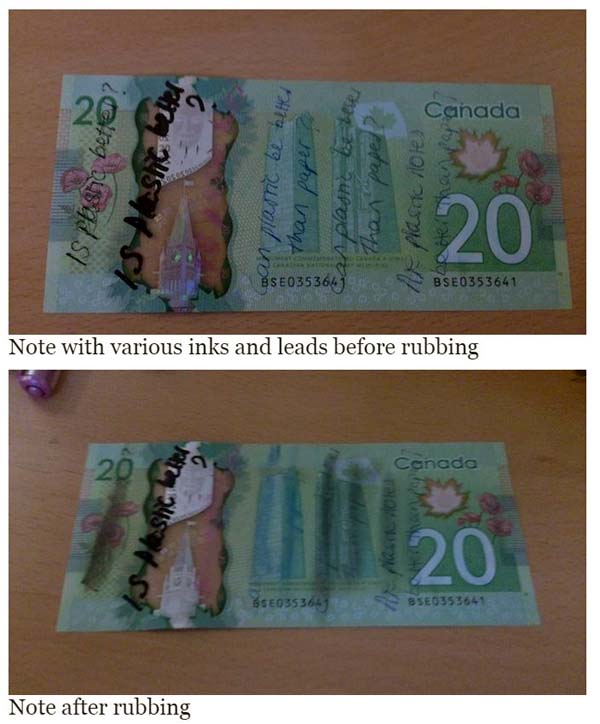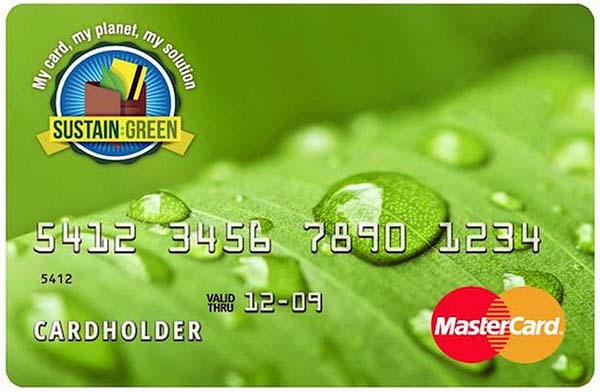Plastic / Polymer / E-Currency Not All It’s Cracked Up to Be
![]() Print this Article | Send to Colleague
Print this Article | Send to Colleague
Recently there have been several complaints about the new polymer based (plastic) pieces of money that have been issued in quite a few western countries of late. It began with Kernel Magazine featuring an article by a journalist who went through some of his own experiments before his camera to show some of the problems with plastic bills.
First was the heat test. The plastic bills curl up easier than currency paper, and stay that way for the remainder of their circulation under high heat conditions (such as being left underneath a car window). A microwave was used at settings that would mimic this level of heat to demonstrate that this complaint was fact and not myth. Then the bill was burned completely. The ash remains were much dirtier, permanent, black, creating a permanent resin-like ash with unknown properties—results of the synthetic remains’ biodegradability. Burning paper currency does not produce the same pure "clean" white smoke and ash as burning seen with papers designed for burning, cigarette papers being the most common example of this type. It however, is much closer than plastic currency, leaving only a gray ash that easily breaks apart into invisible dust of primarily organic source combustion.
The next test was the sharpie test. Plastic money supporters claim that the money cannot be defaced. That was not found to be true, except for pencil, which is not commonly used even on paper currency for defacing purposes. Sharpie’s ink was effectively unrecoverable from the plastic currency. It was there for good. Finally, for fun and a little humor, the writer concluded the test by comparing plastic money with a confirmed urban legend that has haunted paper currency—much of it once put into currency in the U.S. is tainted with cocaine powder residue. The researchers chose to use flour pressed against the currency and test how much residue stuck compared with plastic paper. Furthermore when rolled up, it did not have the pliability and ability to roll tight as paper currency. This is also where researchers noted its "stickiness" in this situation as well as damage to the structure of the bill, breaking structure inside the plastic.

Earlier in July, an article circulated from the Hindu Business Line, Chennai, India, asking if virtual, or e-currency can replace all money printed as bills, whether on a primarily fiber (paper) medium or a polymer (plastic) one. As the article explains, the success of implementing a cashless economy would depend on whether the benefits to merchants and consumers exceed the loss associated with disclosures on the true volume of transactions. Any move to forcefully expose consumers to e-transactions without taking care of their tax burden (lowering it to compensate for the shock of inconvenience and adjustment in an economy) is likely to increase the cost of living, which may push economically stressed consumers further into poverty.
An article earlier this month by the Daily Star of Dhaka, Bangladesh, noted that cashless transactions are beginning to increase in that country. "The use of plastic money rose 5.5% in the third quarter of fiscal 2014-15 from the previous quarter as local consumers continue to embrace cashless transactions," the paper noted. Pre-paid cash cards and debit cards are the primary drivers of cash currency replacements.
It may be unrealistic to expect the future to not change business landscapes and for there to be a mass return to paper currency, even if it earns reasons to stay on the market in the opinion of those who have experienced problems with other sources of payment. But the paper industry may be suited to help produce alternatives to the plastic cards that once disposed of, do not biodegrade and are adding to the near epidemic of global plastic pollution effecting eco-systems for generations. Payments, Boston, Mass., USA, a leading currency magazine, highlighted the recent development of a card that is compostable and biodegradable. Sturdy cards that could hold a magnetic strip for long periods, as in years, could become a focus of the pulp and paper industry as fiber based paperboard, even in a most sturdy form, is compostable and completely biodegradable.

The currency paper industry may benefit from working harder to dispel the constant praise with a lack of criticism that leads to overwhelming popularity for the idea of plastic or electronic currency, but it should still be assured that currency has our place in society, unless those who issue it decide to implement massive cuts to revenue and taxes to offset the effects of transition to electronic only transactions.


